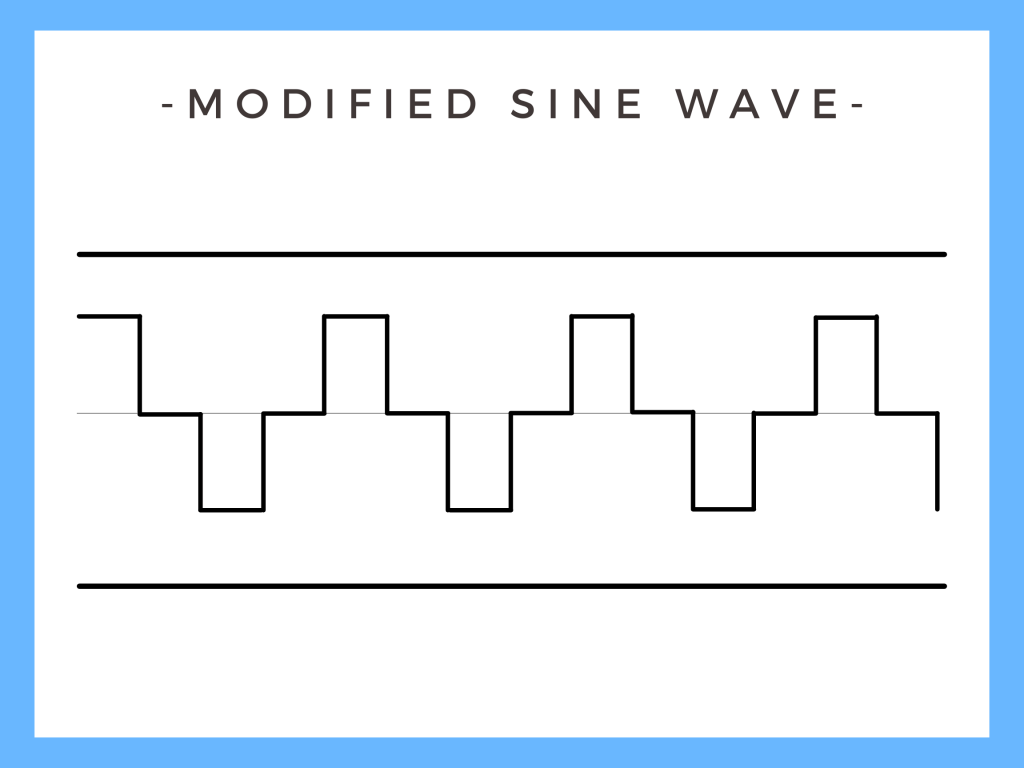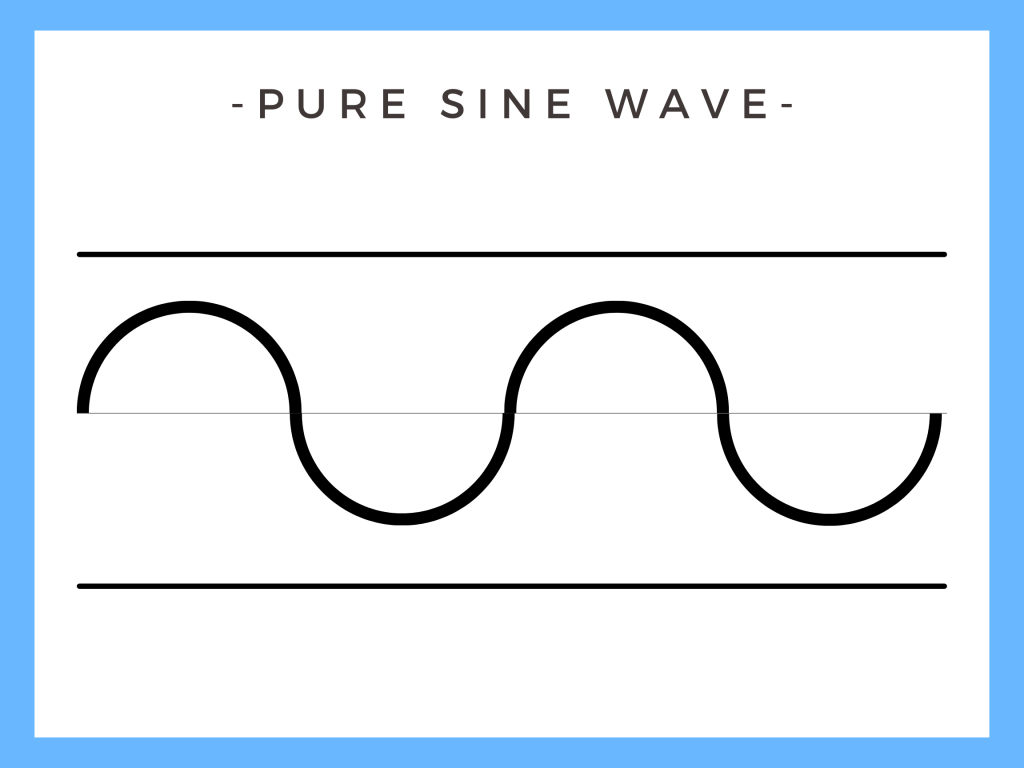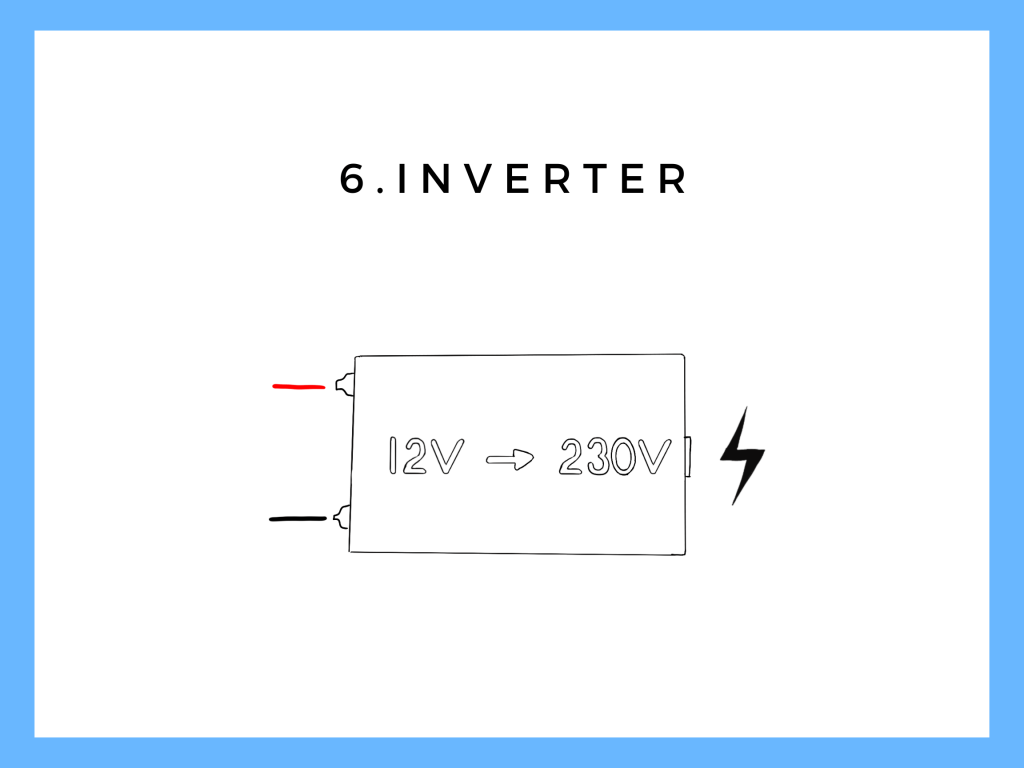The voltage in your auxiliary battery is (normal) 12 Volts. This is different from your outlets at home, which operate at 230 Volts. Do you want to use appliances in the campervan with a plug? Think of a blender, coffee machine, microwave etc. Then you need an inverter!
1. How does a campervan inverter work?
A campervan inverter transforms the 12 volts from your auxiliary battery into 230 volts. During this process, a number of things can happen that you have to keep in mind:
Conversion losses
During the conversion from 12 to 230 volts, a loss of approximately 10 to 15% occurs. To avoid unnecessary loss, it is therefore advisable to charge as many applications as possible with 12 volts, for example by buying an adapter for your laptop.

Peak current
Refrigerators, Senseo appliances and similar devices need extra power when starting up. Most inverters can also deliver peak current, so compare the peak current of your appliance with the inverter.
Battery capacity
Lead-acid batteries
If you plan to use a device that requires a lot of power, it is advisable to calculate your leisure battery accordingly. As a rule of thumb, the power of the inverter in watts should be no more than five times the capacity of the battery in ampere-hours. This refers only to short-term use! If you are going to cook on an induction hob, for example, it is not advisable to choose a lead-based battery.
Victron has published a notice for those who want to know more about this.
Lithium batteries
These batteries are suitable for higher discharge currents, as a rule of thumb you can use: battery capacity = maximum discharge current. So a 100Ah battery can discharge at 100A (1200 Watts). This may vary from brand to brand, so check the manual.
2. What type of inverters can you use in a campervan?
In this blog post we will discuss three variants: the traditional inverter, Victron MultiPlus and Ective SSI. If you have read the blog about shore power connection you might already know the differences.
The traditional campervan inverter
This campervan inverter has one function and that is to convert 12 volts to 230 volts. This can be a great choice for someone who does not have a shore power connection. Or someone who uses a separate battery charger.
Victron MultiPlus
Multi-functional
A pure sine wave inverter, battery charger and
Inverter transfer switch in one.
Unique PowerAssist functionality
With the MultiPlus you can consume more power than the mains would allow. In case of overcharging, the MultiPlus will “help” with energy from the auxiliary battery.
Power without interruption (UPS function)
In the event of a loss of shore power, the MultiPlus will switch over to the auxiliary battery. This happens so quickly that all electronics continue to function as usual.
Compact housing
High functionality and power in a compact housing.
Ective SSI
Multi-functional
A pure sine wave inverter, battery charger,
Inverter transfer switch and MPPT charge controller all in one.
MPPT Charge Controller
Connect up to 550 watts of solar panels to this device.
Battery charger
Suitable for any type of battery.
Robust housing
Equipped with a safe and robust housing.
3. How big should my campervan inverter be?
Campervan inverters need the right size. This is easy to calculate:
- Think about which appliances you want to use (at the same time) in your campervan.
- Then look up the power (watts) of these devices.
- Add up the power of all devices and voila.
Now you know how big your campervan inverter should be. Oh, to make it a bit easier, we have developed a program for this.
4. Additional Information
This section explains what else you should consider before purchasing an campervan inverter.
Modified sine wave inverter or pure sine wave inverter
When picking an campervan inverter, it is recommended to check carefully which type of inverter you are looking at. There are two types:
Modified sine wave inverter: this inverter has a ‘different waveform’ of voltage than is found on the outlet at home. These inverters are cheaply made and not suitable for all electronic equipment. When connecting for example a coffee machine or microwave, these devices may not function. Don’t buy this model.
Pure sine wave inverter: this inverter has no ‘abnormal waveform’ and can be used for all devices. These inverters are more expensive, but of better quality than modified inverters.


Mounting your campervan inverter
Due to the high currents that these devices can generate, this is the most dangerous part of your electrics. Make sure that the (cable) connections are solid! If you are not sure, have a professional check it out!
Furthermore, it is important to use the right cable thicknesses and fuses. This blog post goes into more detail about that.
The Electrical Wiring Diagram calculates cable thickness and fuse size.
Idle current campervan inverter
When your campervan inverter is switched on and no device is connected to it, it still consumes power! Therefore, buy a remote control so you can easily turn the inverter on and off.
The idle current of our inverter is about 10 watts per hour.
5. Making a choice
If you need an inverter depends on a number of factors:
Do you need an inverter in your campervan?
Most campervans are equipped with an inverter, but it is not always necessary. It is quite possible to charge the battery of your camera, phone, laptop or drone without an inverter. By using a 12 volt adapter. This saves you the cost of an inverter and you are more efficient with your power consumption. You do not have the 10-15% loss that an inverter creates.
If you want to use, for example, a blender or microwave, then you can not avoid an inverter.
5. Our choice
We chose an Ective SSI 15 as our inverter. This unit has a built-in 20A MPPT charger, 20A battery charger (shore power), Inverter transfer switch and an inverter function (1500W).
We chose the Ective SSI because we could connect everything to this unit: solar panels, shore power and inverter. And the price is about 50% cheaper than a Victron system.
Your campervan inverter neatly arranged in a diagram? You can! And to give you a hand, we have developed 3 files in which you can design your own unique wiring diagram.

Hey! By the way… any links on this page that lead to products on Amazon are affiliate links and I earn a commission if you make a purchase. Thanks in advance – We really appreciate it!


